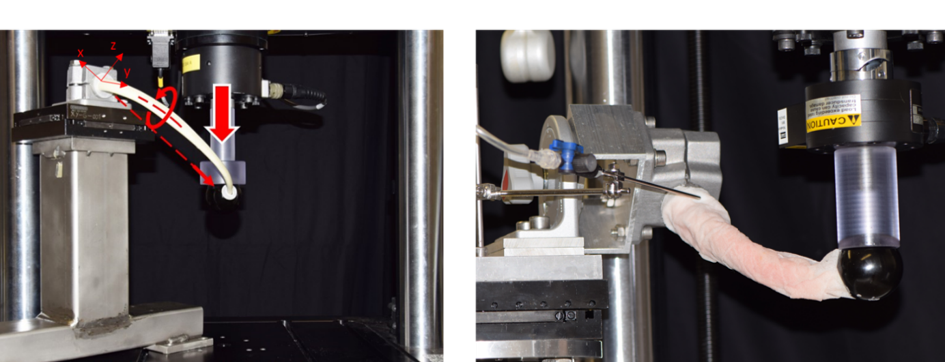Biomechanical investigation of intrathoracic versus extrathoracic rib fracture plating (RibPlate)
Background
The high morbidity following surgical interventions on the chest wall due to large incisions, especially when treating subscapular fractures, often prevents surgeons from operative rib fracture fixation. Minimally invasive approaches to the intrathoracic side of the rib could allow for smaller incisions with lower morbidity, while maintaining construct stability.
Goal
To compare (1) the biomechanical competence of intrathoracic versus extrathoracic plating of rib fractures and (2) the biomechanical performance of 2 versus 3 screws per fracture fragment.
Results
Forty paired ribs were fractured under 3-point bending and randomized to 4 fixation groups instrumented with either intra- or extrathoracic plate position using 2 or 3 screws per fracture fragment. They were cyclically tested over 400'000 cycles under a combined torsional and tensile bending loading by load application ranging from 2 to 5 N. Stiffness and subsidence of the construct were calculated from the cyclic data. Subsequently, load to failure under ramped compression bending loading was evaluated. Compared to the native state, intrathoracic plating provided a significant increase in construct stiffness versus the extrathoracic plating, thus indicating superior fixation stability of the intrathoracic approach. The use of only 2 instead of 3 screws per fragment for plating was found to maintain the stability of fixation. In a clinical context, fewer screws could decrease surgery costs, reduce surgery duration and allow for smaller incisions with lower morbidity.
-
Partner
Gasparri M (Prof), Medical College of Wisconsin, USA
Schulz-Drost S (MD), University Hospital Erlangen, Germany
Brace M, DePuy Synthes, USA


